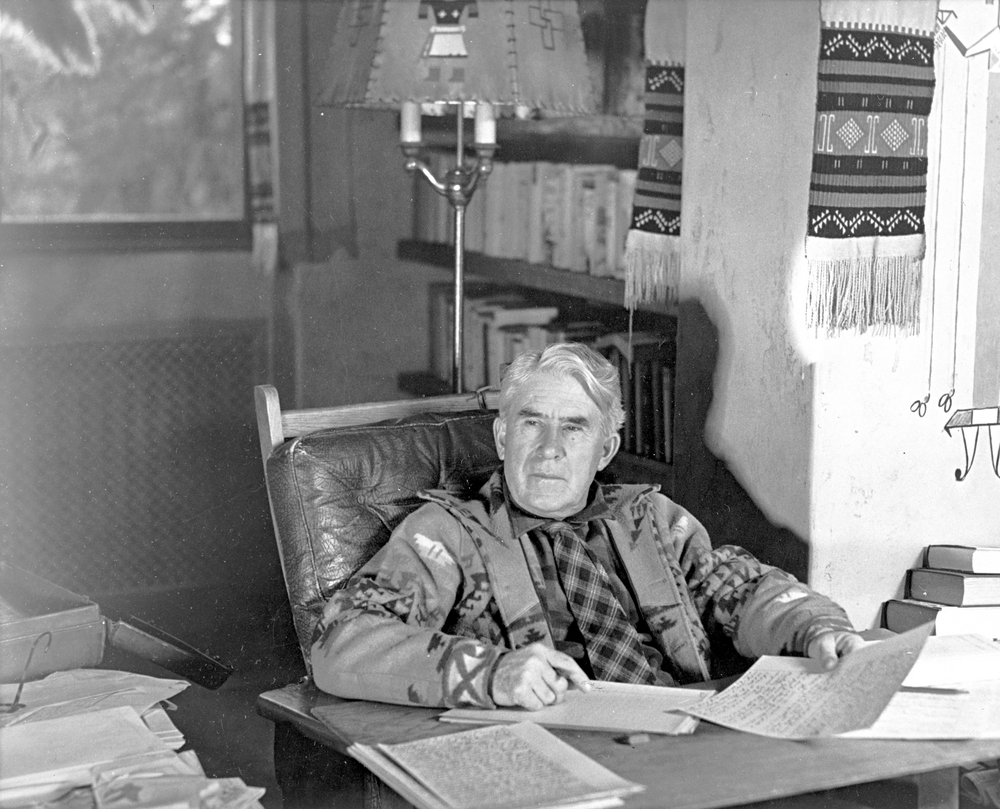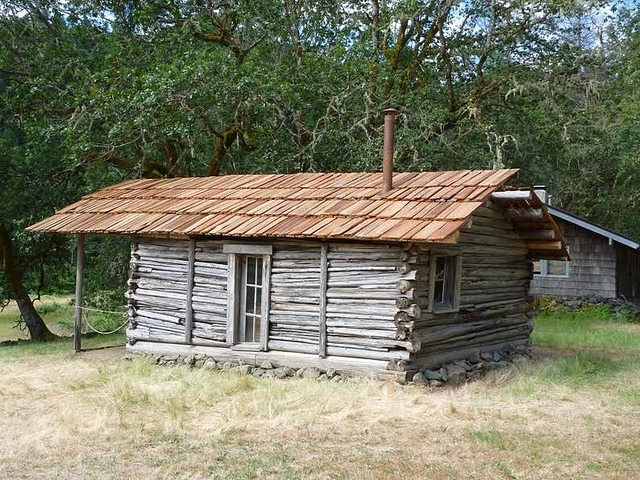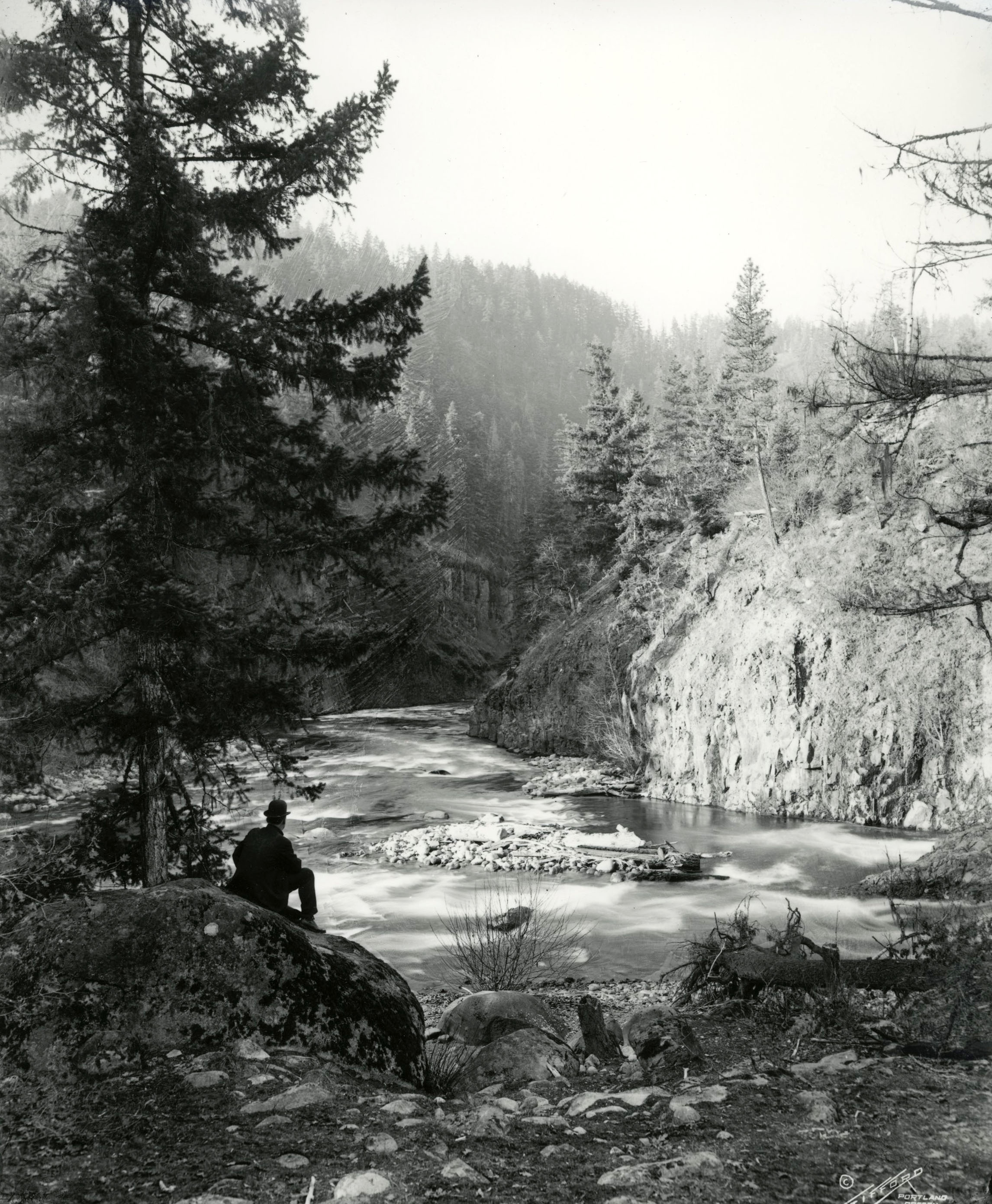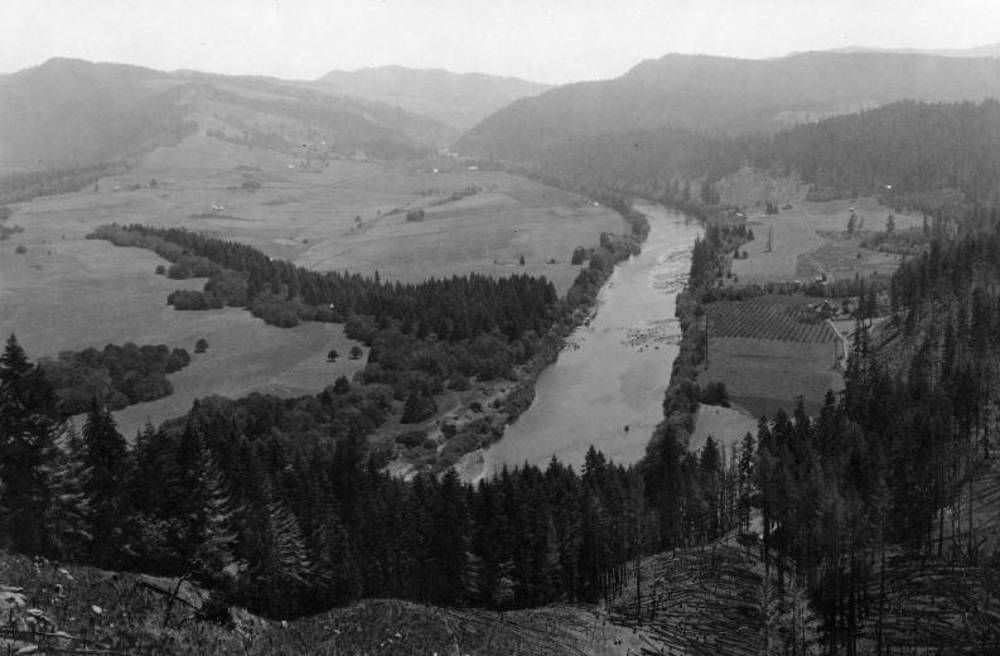Inveterate angler Zane Grey, writer of highly popular Western fiction, first visited Oregon in 1919 to fish the waters of the Rogue River and Crater Lake. He returned to the Rogue throughout the 1920s, turning his 1925 drift-boat expedition down the length of the lower Rogue into a chapter of his Tales of Fresh Water Fishing (1928). The trip also inspired his 1929 novel Rogue River Feud, which traded wild mustangs on the range for drift boats in whitewater rapids and the usual rapacious cattle baron for a villainous salmon-packing magnate (loosely based on R. D. Hume). Grey eventually became less enchanted with the Rogue as it became increasingly fished. By the mid-1930s, the North Umpqua River had become Grey’s favorite Oregon stream.
Zane Grey helped popularize fly fishing for salmon and steelhead in the Far West, and his writings helped give the Rogue and Umpqua their national reputations as preeminent steelhead-trout streams. He promoted conservation in many of his writings, condemning the Rogue’s salmon hatcheries as inevitably leading to “quantity over quality” and promoting judicious sport fishing at a time when most anglers proudly posed with huge strings of trout. To Grey, rural Oregon fishermen were wasteful rustics. For their part, local residents later recalled Grey as an elitist “dude.”
Born and raised in Zanesville, Ohio (named for his ancestors), Grey graduated from the University of Pennsylvania in 1896 with a degree in dentistry, and opened a practice in New York City. In 1912, he wrote his third Western, the phenomenally popular Riders of the Purple Sage. That novel was followed by a long string of successes, and Grey became one of the best-selling novelists of the twentieth century. Critics were not as kind to him as readers, however, and some dismissed him as "The Writer of the Purple Prose" because of his formulaic, florid style. In spite of Grey's critics, Hollywood converted nearly fifty of his novels into films, the most of any Western author.
In 1918, Grey (by then wealthy from his writing career) purchased a mansion outside Los Angeles, California, where he lived for the remainder of his life. He also bought a rickety log cabin on a mining claim in the lower Rogue at a bend in the river called the Winkle Bar. He used the cabin as a personal getaway for fishing. The cabin still stands and remains a favorite stopping point for groups of whitewater boaters and hikers in the still-remote lower Rogue River canyon. Long privately held, the property on Winkle Bar was purchased by the Trust for Public Land in 2008 and transferred to the U.S. Bureau of Land Management, thereby guaranteeing public access and providing for long-term preservation of Grey's rustic cabin. It was listed on the National Register of Historic Places in 2016.
-
![]()
Zane Grey.
Oregon Historical Society Research Library CN 020999
-
![Zane Grey's cabin with new wood-shake roofing.]()
Zane Grey Cabin on the Rogue River.
Zane Grey's cabin with new wood-shake roofing. Courtesy Bureau of Land Management Oregon and Washington
Related Entries
-
![Rogue River]()
Rogue River
The Rogue River, Oregon’s third-longest river (after the Columbia and W…
-
![Umpqua River]()
Umpqua River
The Umpqua River, approximately 111 miles long, is a principal river of…
Map This on the Oregon History WayFinder
The Oregon History Wayfinder is an interactive map that identifies significant places, people, and events in Oregon history.
Further Reading
Arman, Florence. The Rogue: A River to Run. Wildwood Press, 1982.
Grey, Zane. Rogue River Feud. New York: Grossett & Dunlap, 1929.
Grey, Zane. Tales of Fresh Water Fishing. New York: A.S. Barnes, 1928.
Reiger, George. Zane Grey: Outdoorsman. New York: Prentice-Hall, 1972.




